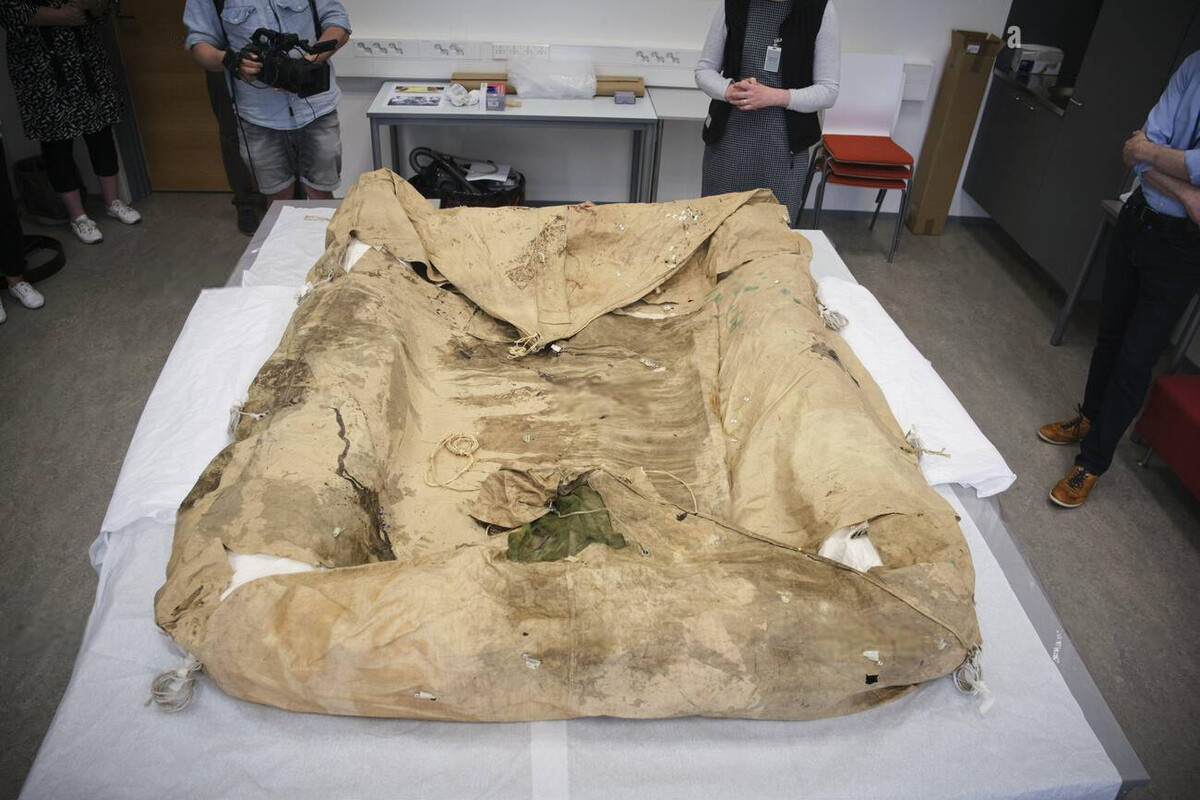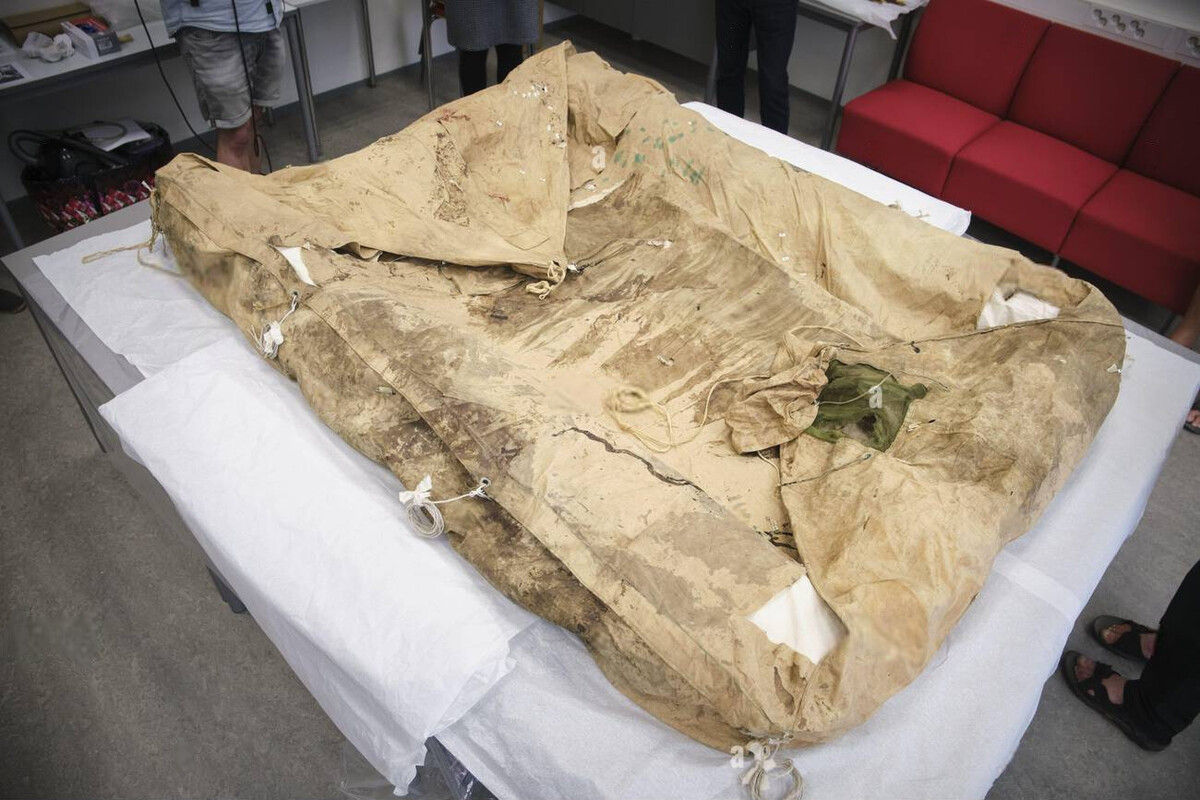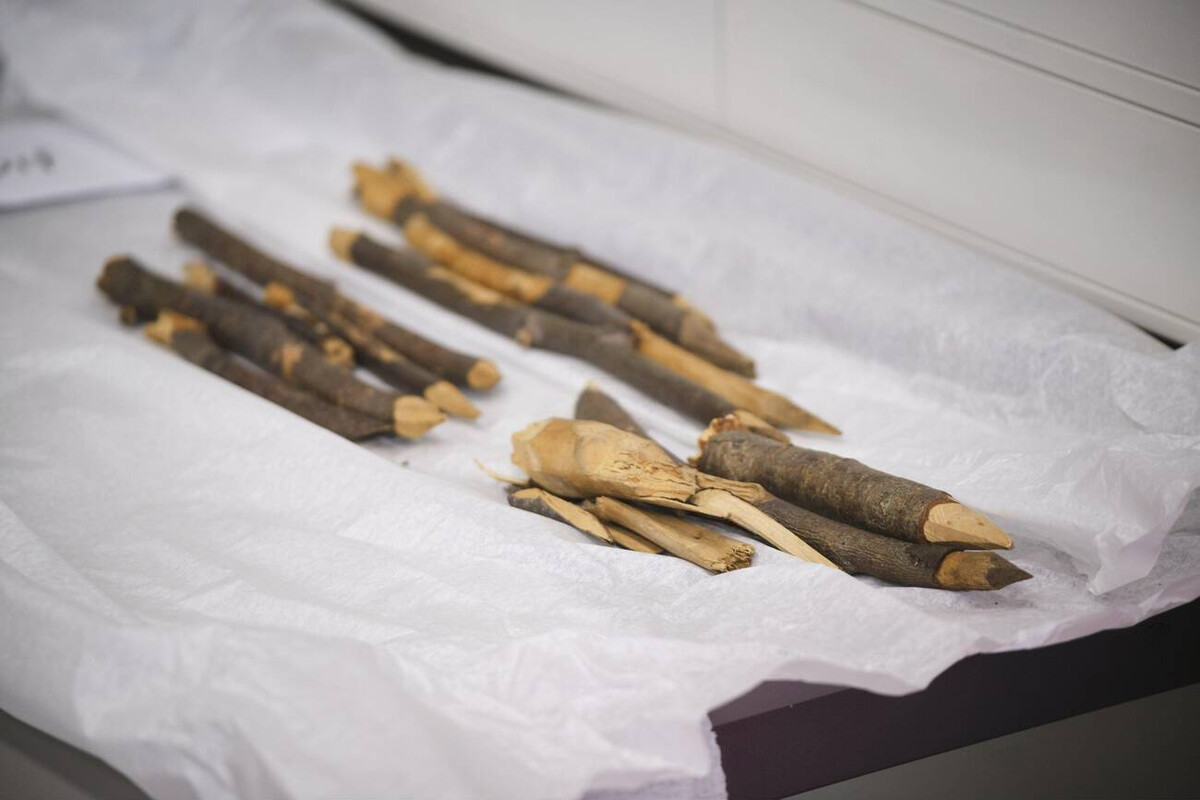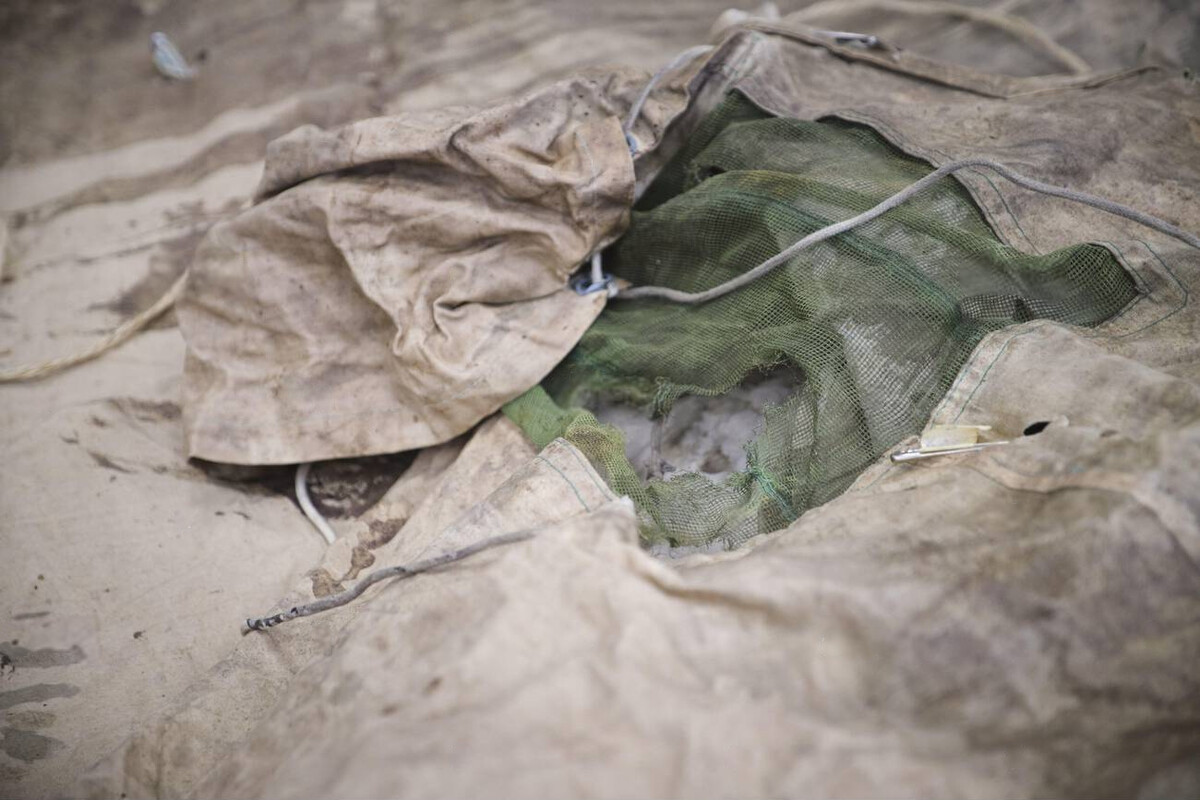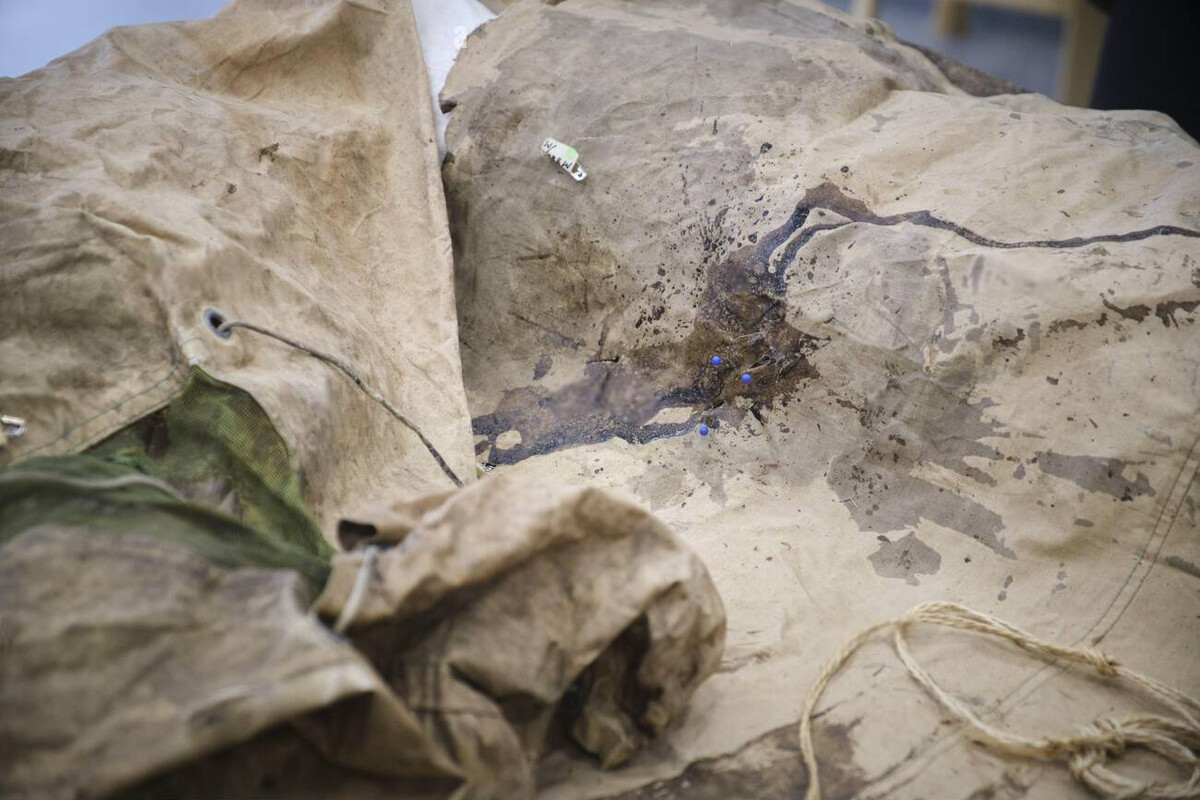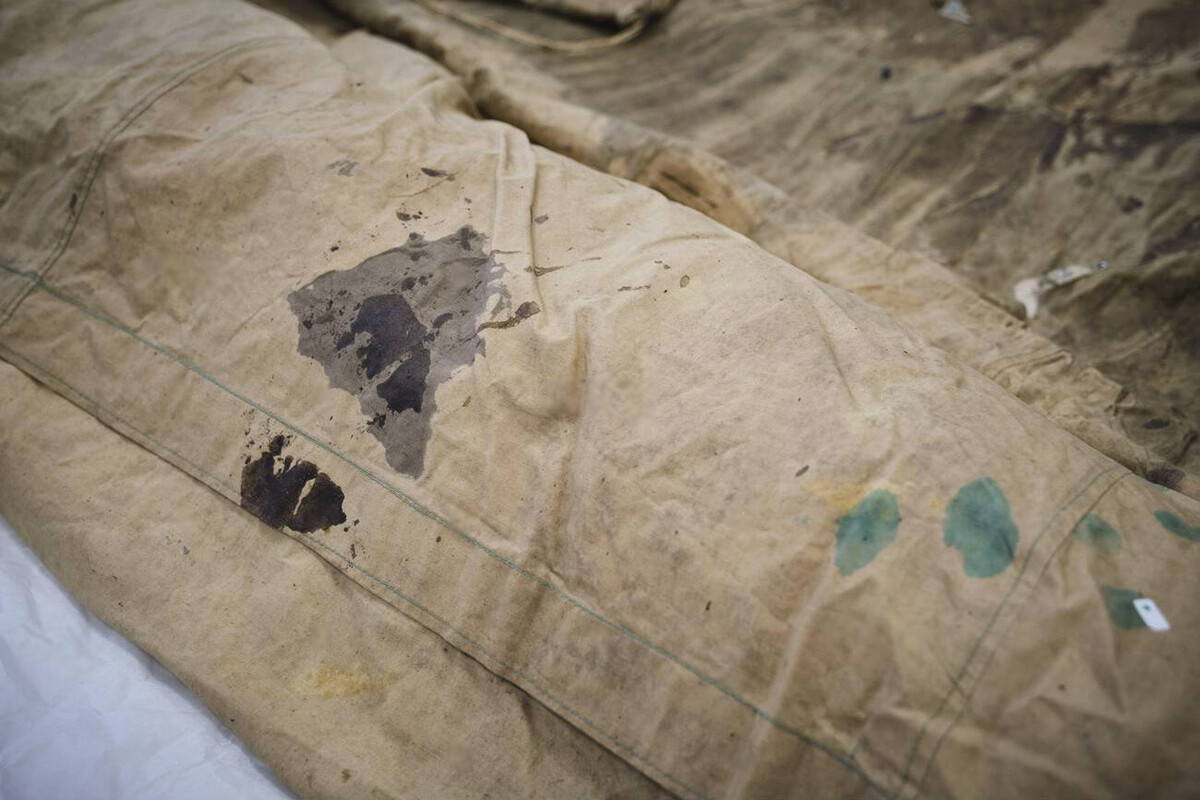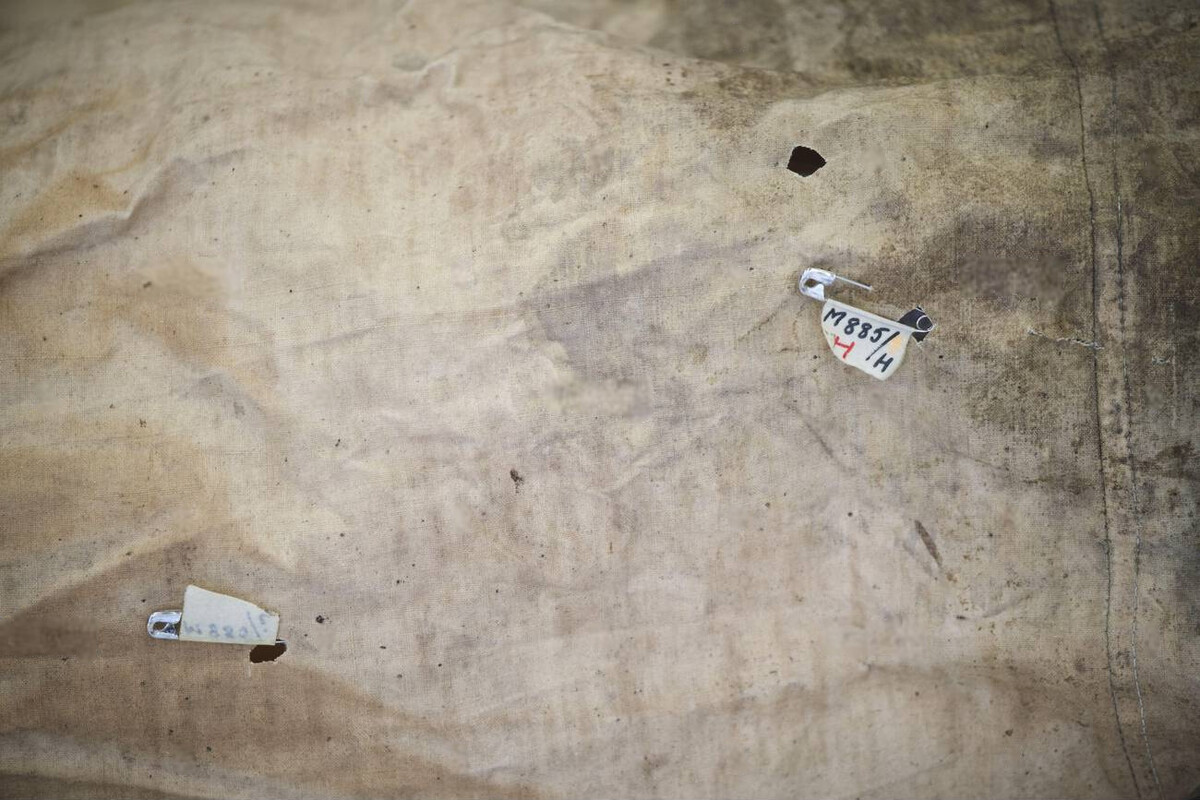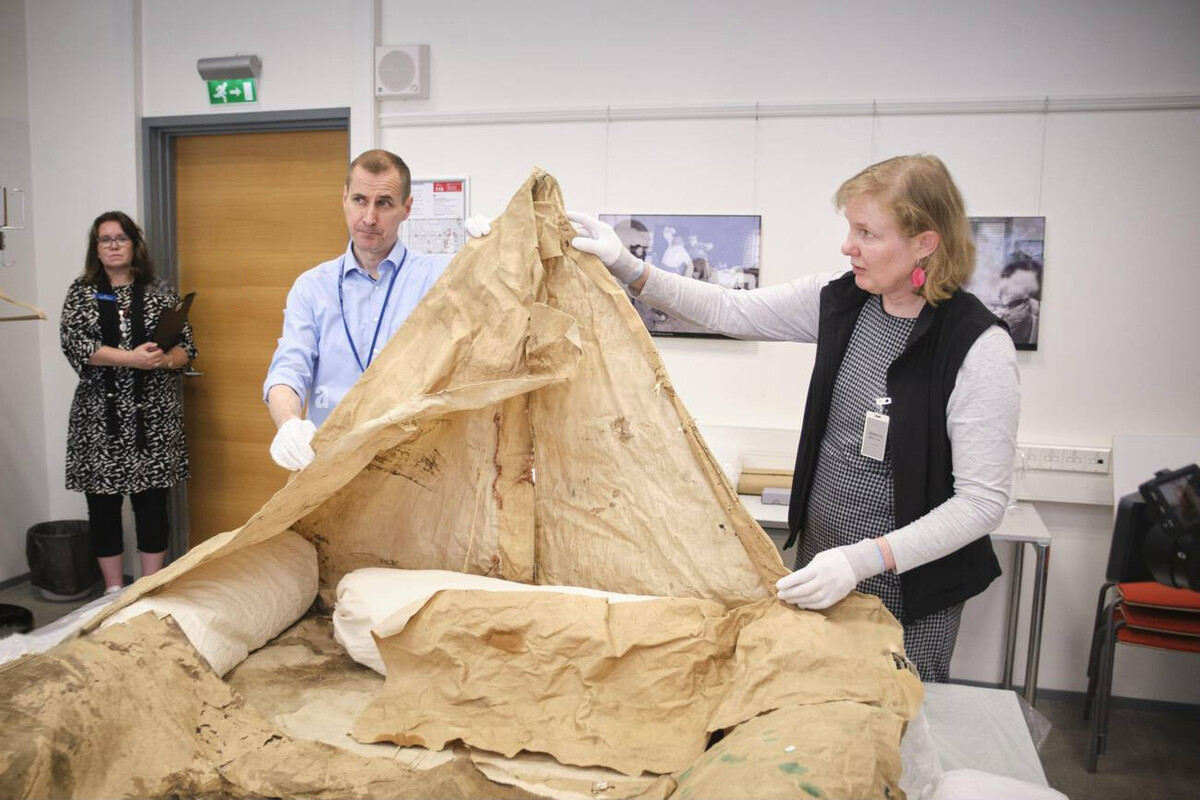A lakeside murder, in which three teenagers on a camping holiday were bludgeoned with rocks and stabbed in their tent, has haunted tranquil Finland for 45 years, spawning books, conspiracy theories and even the name of a rock band. The similarities with the Dyatlov Pass incident are torn tent, the year is 1960, KGB agent, military involvement, a survivor, two dead girls, authorities were careless with their treatment of the murder site, but most of all the trail goes cold as ice.

Lake Bodom is a beautiful lake with a dark secret
In the early hours of the morning in June 1960, an unknown perpetrator attacked four teenagers as they camped on the shore of Finland’s famous Lake Bodom. Three died, one survived, and whoever conducted these brutal murders remains unknown. To this day, the Lake Bodom unsolved murders remain one of Finland’s greatest mysteries.
Around twenty kilometers from Helsinki lies the small town of Espoo, Finland. It lies near the serene Lake Bodom, a place unassuming in its tranquil beauty. However, in 1960, a triple homicide tainted the lake’s legacy forever.
Murders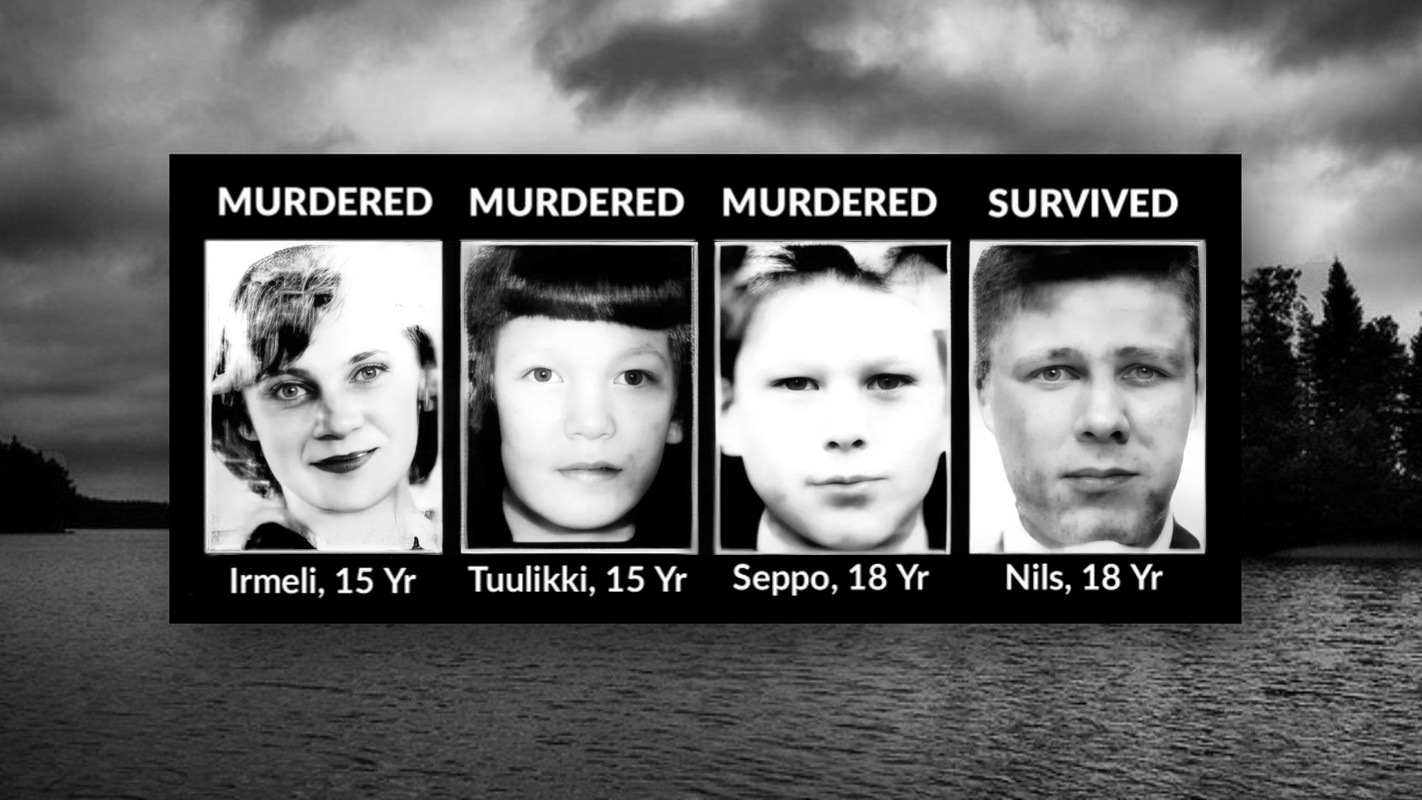
Irmeli Björklund, Tuulikki Mäki, Seppo Boisman, and Nils Gustafsson
Four teenagers, made up of two couples, set up tents on the shore of Lake Bodom in the early evening of June 5, 1960. They included Seppo Boisman (M) and Tuulikki Mäki (F), and Nils Gustafsson (M) and Irmeli Björklund (F). Both boys were 18, and both females were 15 years old.
At 10:30 pm, both couples retired to bed. What happened between then and the next morning is still a mystery, but around 11:00 am on June 6, a man who’d been swimming in Lake Bodom made a gruesome discovery. He stumbled upon what appeared to be four dead bodies.
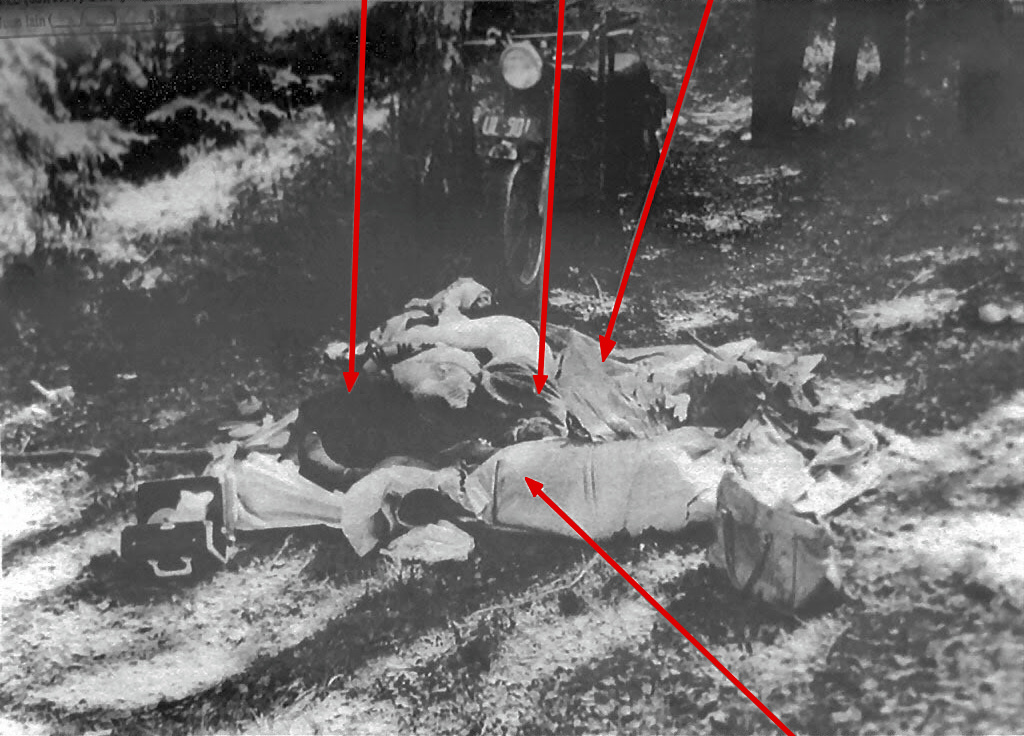
This is how the tent was found, two bodies inside, two bodies on top
Someone had attacked the teenagers through the fabric of their tent, leaving three dead and one barely conscious. All possessed multiple bruises and stab wounds, including the still-alive Nils Gustaffson, discovered lying on top of the tent with his girlfriend Björklund. Both Mäki and Boisman lay dead inside. The tent appeared torn to shreds, and several items belonging to the group, notably clothes and money, appeared stolen.

The killer attacked the victims from outside the tent.
The murder weapon was never foundPolice discovered the attack on the group occurred sometime between the hours of 4:00 am and 6:00 am, most likely with both a knife and a blunt object. However, they couldn’t determine what murder weapon fatally wounded the three victims. In fact, the police never found the murder weapon.
Some clothing belonging to the group was found covered in blood around 500 meters away from the murder site, and stranger still was that the killer had stolen the keys to Boisman’s motorcycle, but hadn’t stolen the vehicle itself.

Dragging the bottom of the lake for the murder weapon
The police called on the military to help search the areas for missing items, although very little was discovered. Authorities were also careless with their treatment of the murder site, inadvertently allowing it to be trampled by the press and concerned citizens. It was believed that this may have disturbed some of the evidence.
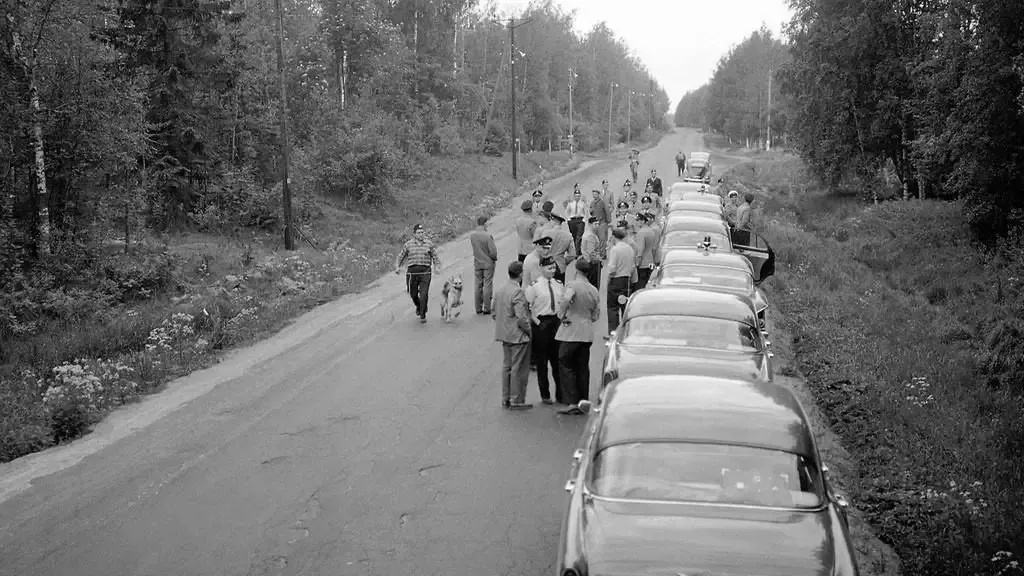
The military was called

Deputy Judge Arvi Vainio leads the investigation.
An autopsy on Irmeli Björklund found that she suffered the most stab wounds, and hacked at post-mortem. By comparison, the other victims had been slain with significantly less brutality.

Investigating the tent in 1960
SuspectsPolice recognized many suspects as possibly responsible for the Lake Bodom murders, including the surviving victim, Nils Gustafsson.

Nils Gustafsson after the attack
Gustafsson’s limited account of the night is due to his claim of being attacked first. He told police he became disoriented and believed the killer, whoever it is, thought Gustafsson to be dead while he attacked the rest of the group. He claimed that he saw the killer "dressed in black and bright red" just before he attacked the group.
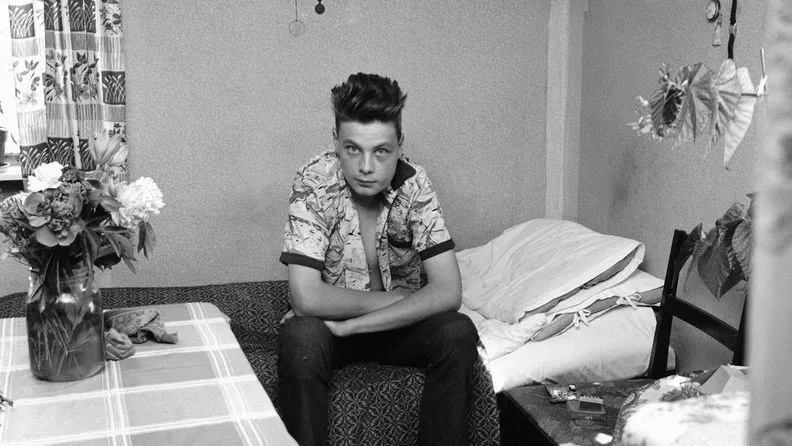
Nils Gustafsson, the only survivor
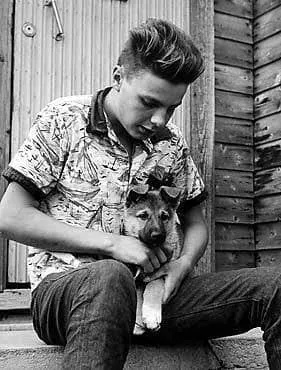
More eerily is that multiple people have confessed to being the Lake Bodom murderer. However, all who’ve confessed have been proven to have been elsewhere on the night it occurred.
Pentti SoininenThe first suspect, a violent criminal named Pentti Soininen, claimed responsibility for the murders of a fellow inmate in his prison in the mid-1960s.
Soininen indeed lived near the murder site. However, he would have been fourteen years old at the time. It is improbable one fourteen-year-old could overpower four similarly aged persons, let alone do it and leave no trace evidence behind.In a strange conclusion, Pentti Soininen hanged himself on June 6, 1969 – the day of the ninth anniversary of the murders.
Karl Valdemar GyllstromKarl Valdemar Gyllstrom was the police’s most viable suspect. According to reports, Gyllstrom confessed to the murders to his neighbor while intoxicated, although he later denied doing so. Gyllstrom, a spiteful man, carried an intense hatred of children and campers.Gyllstrom’s wife provided his alibi for the night of the murders, claiming that Gyllstrom was in bed all night. However, this statement was later retracted, asserting that her husband threatened to kill her if she implicated him in the murders.
Some locals also said they saw Gyllstrom returning home in the early hours of the morning on June 6. But due to Gyllstrom’s violent nature, they were too afraid to call the police. Gyllstrom’s possible involvement in the case soon ended, as similar to Pentti Soininen, Gyllstrom also committed suicide in 1969.In a particularly haunting exchange, Gyllstrom told a friend of his, Börje [no last name given] that he killed the teens, but Börje didn’t believe him. When Gyllstrom asked what he should do if he were responsible, Börje said, "you should drown yourself, because you’ll be spending the rest of your life in prison".
A few hours later, Gyllstrom returned to Lake Bodom, where he committed suicide by drowning himself.
Hans AssmannHans Assmann, a reported KGB spy, became a notable suspect in the Lake Bodom massacre.
On June 6, 1960, Assmann arrived at the Helsinki Surgical Hospital in an extremely delirious state. His clothes appeared blotted with red stains. He spoke incoherently, and his fingernails appeared dirtied black.
At points, Assmann pretended to be unconscious as a way to manipulate the doctors into seeing him quicker than the other patients. When this didn’t work, Assmann became hostile towards staff and patients and subsequently told to leave.
Interestingly, on the morning of the Lake Bodom murders, two children claimed to have seen a ‘blonde man’ fleeing the crime scene around the time the murders occurred.
Assmann, it turns out, had long blonde hair at the time of the Lake Bodom killings. When this information became public knowledge, Assmann reportedly shaved hair completely bald. Additionally, the clothing that Assmann wore when he entered the hospital that morning matched the children’s description.
Assmann lived in the Lake Bodom area, and his behavior around the time of the murders was cause for suspicion. Many detectives believed Assmann to be involved in the killings somehow, even if he wasn’t directly responsible.
Furthermore, Assmann had been a murder suspect in the past. Second, only to the Lake Bodom murders, the case of Auli Kyllikki Saari is one of the most famous cases in Finnish history. It involves the murder of a 17-year-old Finnish girl in 1953 of which Assmann became a major suspect. The police also linked him to at least three other unsolved cases.

Lake Bodom Murders suspect, Hans Assmann
Nils Wilhem Gustafsson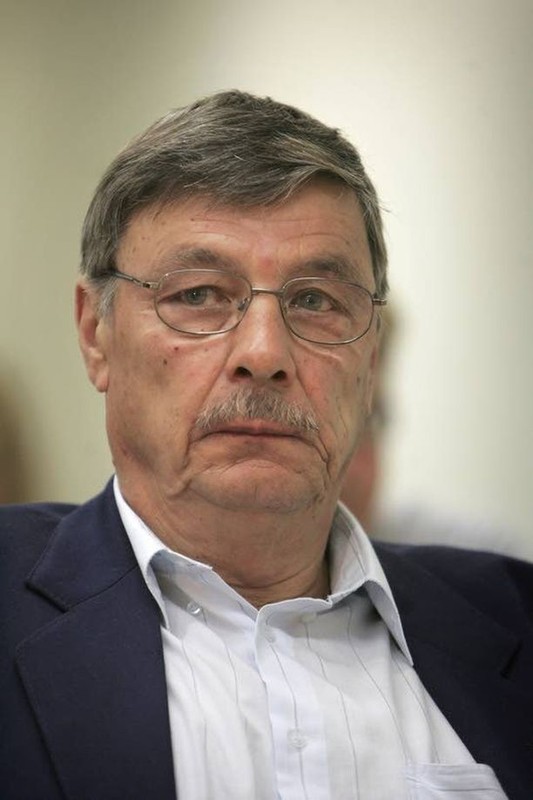
Nils Gustafsson, a suspect after 45 years
After the incident, Nils Wilhelm Gustafsson lived a normal life for over forty years. He married, had two children, and retired from working life. However, in 2004, Finnish police re-opened the case based on the discovery of new DNA evidence.
The police found blood samples from each of the victims on Gustafsson’s shoes. They also ascertained that the killer, whoever it might have been, was wearing Gustafsson’s shoes either during or after the murders.

Nils Gustafsson shoes
In a case that has prompted frenzied media interest, Nils Gustafsson denies he killed two 15-year-old girls and his 18-year-old best friend and claims - as he has done for 45 years - that he cannot remember what happened on the night of 4 June 1960.
On Thursday prosecutors and the defence visited the murder site at Lake Bodom, 20 kilometres west of Helsinki. To visitors, the spot where the four youngsters pitched their tent looks like an idyllic Nordic bay ringed with birch trees shimmering in the midnight sun. But every Finn associates the spot with the most vicious killing in the country's history. And not everyone is convinced - despite new forensic evidence analyzed with British help - of Gustafsson's guilt.
'Three generations of children have grown up being told not to stay out late for fear of the Bodom murderer,' said Espoo shopkeeper Anna Pirisjoki. 'We feel that, if it really was Gustafsson, the police would have charged him long ago.'
Gustafsson, who is married with two grown-up children, had until last May been absolved of guilt because he appeared to have suffered serious injuries. Police now claim the broken jaw he sustained was the result of a fight with his best friend, Seppo Boisman, whom he later killed with rocks and a knife, along with his girlfriend, Irmeli Bjorklund, and her friend, Tuulikki Maki, both 15.
Police believe Gustafsson arranged the crime scene, removed Bjorklund's trousers and inflicted stab wounds on himself to give the impression of a frenzied sex attack by a mad knifeman. They say a key piece of prosecution evidence is Gustafsson's shoes, on which British forensic scientists earlier this year found traces of the victims' blood.
Many people in Espoo believe the real killer was a kiosk attendant at the beauty spot, who killed himself in 1972 and confessed to the triple murder in a suicide note. But police say he was sleeping with his wife on the night of the killing.
In hearings last week Gustafsson appeared passive as he heard written witness statements and accounts from birdwatchers and anglers who were as young as 11 in 1960. Among them was a woman who was camping nearby with friends on the night of the murders and who did not come forward until she was interviewed for a television documentary last year.
She claims Gustafsson and Boisman had visited her tent during the evening of the murders and that Gustafsson had been drunk and behaved aggressively. In defence evidence this week Gustafsson's lawyer, Riitta Leppiniemi, will argue that he was in the tent when an outsider stabbed the four campers through the fabric. She will argue that traces of Gustafsson's blood inside the tent confirm that he, too, was a victim.
Leppiniemi said: "Gustafsson remembers certain things clearly such as the arrival at the campsite. He also remembers clearly that the party did not visit another tent. The woman claiming this has kept quiet for 45 years. Also, Bjorklund's diary does not mention the visit."
The lawyer claims Gustafsson had no motive, and that a number of items disappeared from the murder scene and were never found.
Source:
The GuardianThe theory which police put forward was that Gustafsson erupted in a jealous rage over an incident with his new girlfriend, Irmeli Björklund. There are no specific details about why Gustafsson would explode in such a manner. Still, a re-examination of the case was authorized based on the new evidence and a possible motive.
To explain why Gustafsson also suffered multiple wounds, police proposed that Gustafsson stabbed and bruised himself to appear as though another perpetrator was responsible.
Gustafsson’s girlfriend, Björklund, suffered the most stab wounds, which suggests a personal vendetta. But it is unlikely that Gustafsson would be driven to such extremes by mere teenage jealously. Gustafsson's lawyers argued that the murders were committed by one or more unknown perpetrators. Furthermore, they claimed that Gustafsson's severe injuries would have made it impossible for him to commit such an act. On October 7, 2005, Gustafsson was exonerated of the crimes and awarded €44,900 in damages for psychological trauma caused by the trial.
Source:
RankerThe PhotographAnother mysterious element to the Lake Bodom murders comes from a peculiar funeral photograph.
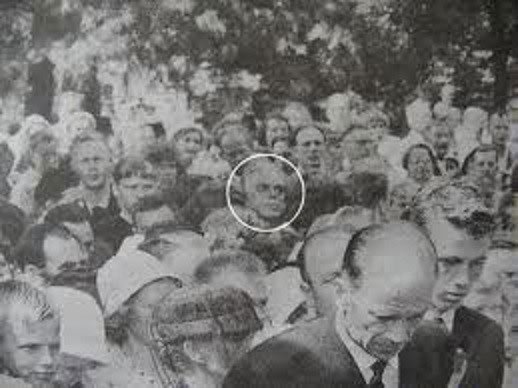
Lake Bodom murders funeral
During his initial questioning, Nils Gustafsson was put under hypnosis and asked to retrace the events in as much detail as possible. Having recalled what his alleged attacker looked like, he dictated the description to an artist who created a composite sketch of the man.
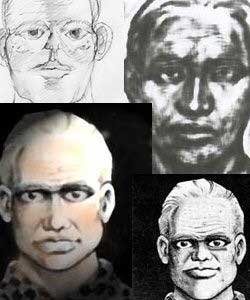
Sketch made by Nils Gustafsson under hypnosis
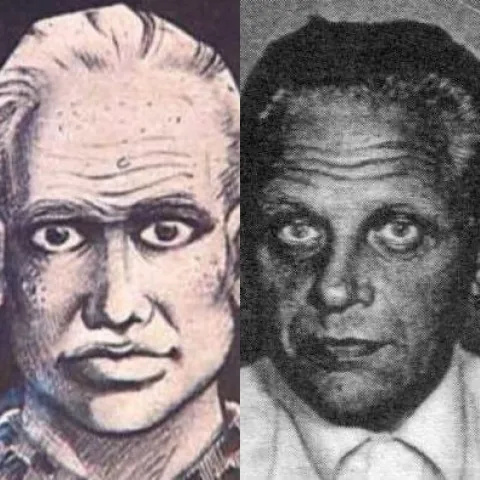
Uncanny resemblance with Hans Assmann
Later, during one of the Bodom victims’ funerals, someone took a picture that showed a man greatly resembling the composite. The identity of this mysterious man remains unknown. Some believed the strange figure was Hans Assmann. But other sources stated that Assmann didn’t attend the funeral at all.
For over fifty years, parents have warned the children of Finland to be on their best behavior. Otherwise, they too could fall victim to the phantom Lake Bodom murderer. He has become somewhat of a boogeyman in Finland. A supernatural figure who attacks unruly children from the shadows.
Most people involved with the mysterious Lake Bodom murders have since passed on, taking what little knowledge of the incident they have to their graves. The killer will most likely never face justice, and the question of who brutally murdered three teenagers fifty years ago will remain unanswered.
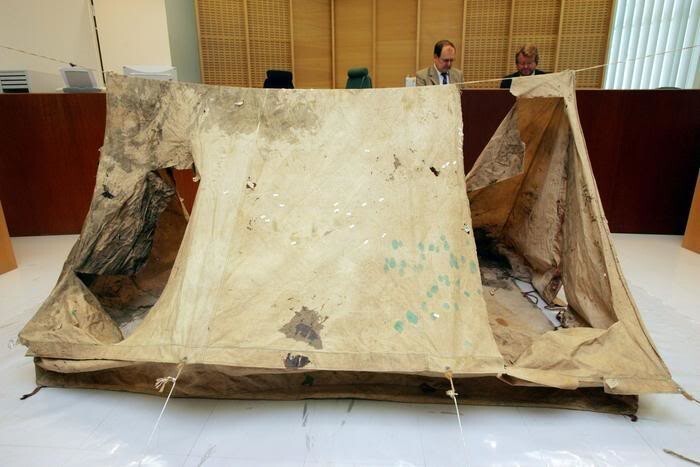
Lake Bodom murders tent during the trial
Lake Bodom murders tent in Police Museum in Tampere, FinlandTampere, Finland. 15th June, 2023. The Lake Bodom murders tent, where three young people lost their lives on June 5, 1960 at the Lake Bodom in Espoo, Finland, is being conservated in the Police Museum in Tampere, Finland on June 15, 2023. The Lake Bodom murders is one of the infamous unsolved homicide cases in Finland. The police has taken samples from the tent canvas, green marks show the sample spots. (Photo by HANNU RAINAMO/LEHTIKUVA/Sipa USA) Credit: Sipa US/Alamy Live News
